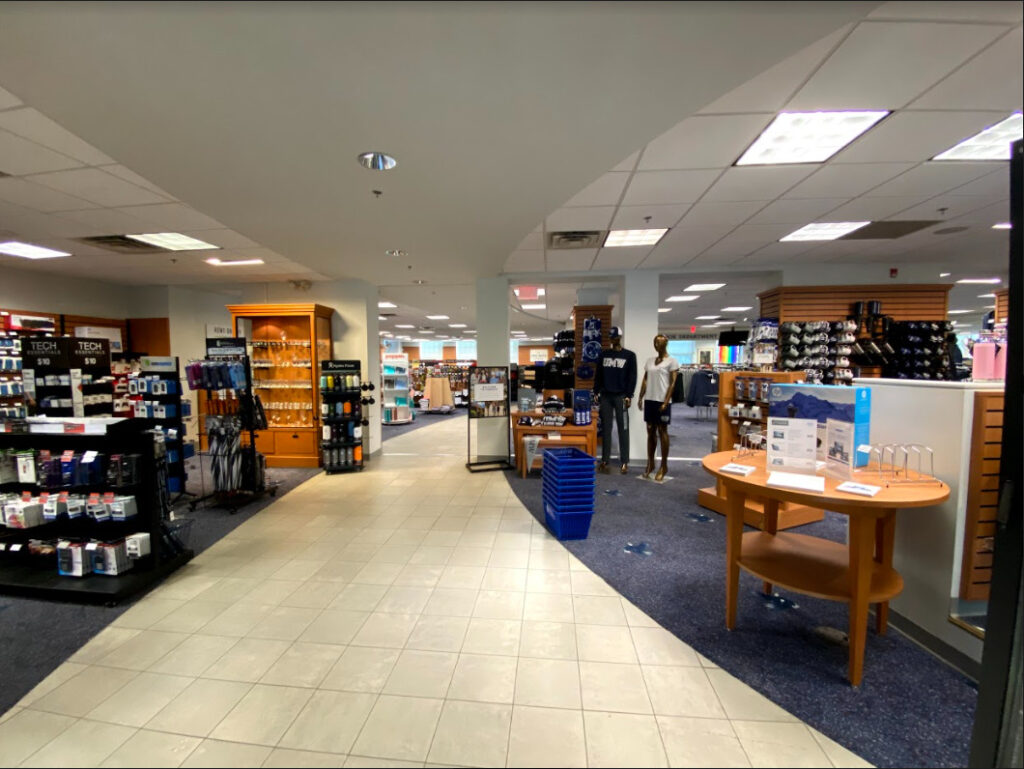Textbook prices should be capped
3 min read
The UMW bookstore sells textbooks to students, but online sites may offer cheaper prices.
by ANNE SMITH
Staff Writer
The exorbitant costs of textbooks are getting tiresome for students experiencing limited funds, with no apparent resolution in sight. UMW should place a limit on how much money students are required to spend on textbooks per semester.
“The frustration of buying textbooks is sometimes overwhelming,” said Abby Zurfluh, a junior historic preservation and geography major. “They are so expensive and sometimes you don’t use them more than a couple times, which you don’t always know when you’re buying or renting, so it can feel like a giant waste of limited funds. But you also feel like you need these books to pass your class.”
For the past several decades, the world of college education has been incumbent on expensive textbooks being an essential part of the educational experience. This adds to the financial struggle, which has a plethora of consequences for college students.
Additionally, sometimes students who are reliant on the disbursement of their financial aid loans to cover the costs of the textbooks do not receive said loans until a week or two after they need to start referring to the text, which poses an issue.
The fact that Mary Washington has a bookstore on campus doesn’t guarantee lower prices when attaining the required textbooks. In fact, some students are more inclined to renting or buying from websites such as Chegg and Amazon, which can sometimes offer lower prices. Even if a student is able to attain a textbook on one of these cheaper sites, after confirming they will need the textbook for the course, it can take a long time to get into the hands of the student.
Buying or renting textbooks has become a pillar of college education, and it appears there is no absolute solution to getting out of that any time soon. Textbooks can be seen as a helpful tool to cover educational bases that professors cannot cover in class due to time limitations. This is because textbooks serve the purpose of providing not only the students but also the professors with an assembly of relevant information relating back to the topics being taught in the class. However, the question still remains: does this information need to be delivered via a $100 textbook that students will only read a percentage of? The weight of this issue seemingly stems from the expectation that textbooks are the main resource that provides students with vital information to achieve exhaustive learning. This makes it almost impossible to provide students with the option to opt out of making expensive purchases.
When students are making financial preparations for the upcoming academic year, UMW also provides an estimation of what the student will most likely spend a year on textbooks, which can vary by major. According to the UMW Financial Aid Website’s estimated cost of attendance in 2021-22, it would cost a full-time student $1,200 for the whole academic year for books and supplies, which breaks down into $600 per semester. This can be seen as an average for students at the University of Mary Washington, not factoring in the student’s major.
“This semester I spent around $400 on books for five classes,” Zurfluh said.
The University of Mary Washington is not alone in this. An article released by US News and World Report in August of 2021 said that “the average full-time, on-campus undergraduate at a four-year school is estimated to have spent $1,240 on books and supplies during the 2020-2021 academic year.”
There doesn’t appear to be any evidence that the University of Mary Washington places a cap on how much a student can spend on textbooks in an academic year. However, some professors, such as assistant professor Melissa Wells in the College of Education, was awarded a $10,000 grant back in March of 2020 to be able to design an Open Education Resources textbook through the Virtual Library of Virginia, which is a “consortium of nonprofit academic libraries within the Commonwealth.” Free or cheaper online resources such as this could be a possible solution to the financial challenge facing many students in the future.


